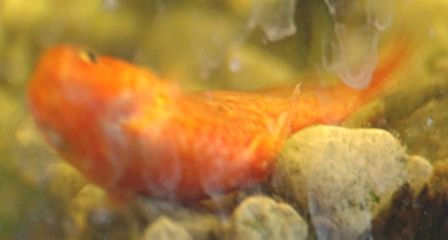The cleaner at work threw away one of my My-Kaps, which allow you to reuse your Keurig K-Cups. This is annoying, as I’d just bought two, and only having one is a pain. They never usually tidy my desk (I think I’ve lost three “Please tidy your desk for cleaning” slips in the strata) so this is mystifying and annoying.
Year: 2009
is it about a bicycle?
It’s either a great tribute to the variety of different bicycles that Batavus produces, or a boneheaded lack of standardization in their product line, but I can’t seem to get a pump from Curbside to fit my bike.
When I test-rode it, it had a Batavus-branded pump. When I got it a week later, no pump. Went back to get a pump; took it home, it was 1cm too short, and would fall out. Took that back. Got a second pump, slightly longer. Took it home; it was 1cm too long. There doesn’t seem to be any rhyme or reason to this.
It’s not as if this is a frame fit pump, where frame size matters. It’s to fit on lugs on a carrier rack. You would have thought that a sensible bicycle would have had a sensible standard …
sheevaplug
I ordered one of Marvell’s SheevaPlug Development Kit; wonder when it will arrive? It will make the best mini-server I could ever wish for.
not the estonian composer

Bob Briehl, the autoharp man in Canada
After ferrying Catherine around for another exciting adventure in LibraryQuest, we took my autoharps to Appalachian Instruments in Oakville for a repair. I have half expecting Bob to declare at least one of them a junker, but apparently they’re more than salvageable. Indeed, the older Type A is apparently a rather nice 1950s wood-bar black felt Silvertone, and the Type B, despite the warped top, is a good little player except for a couple of weak springs. Bob’s busy repairing and generally refurbing them, and we should get them back in a week or two. Should we form an autoharp folk duo?
Bob’s the local luminary of the autoharp, and has many models and spares in stock. It’s best to leave a message on the store’s phone, as he’s not always there. He also teaches, and does house calls.
Appalachian Instruments
117 Westside Drive, Oakville ON L6K 1P2
171 Solingate Drive Oakville ON L6L 3S8
(905) 845-0638
Update: Bob advised of a change of address.
little monster

Yes, really – a Suzuki monster truck. Oh dear.
the great thing about standards is that there are so many to choose from
I have a suspicion that, while I Want My Green Plug and their associated blog One Plug. One Planet want to replace all power adaptors with theirs, all that will really happen is that:
number_of_power_adaptor_variants = number_of_power_adaptor_variants + 1
I’m not wild about their idea for DC power strips. The I2R losses would be huge.
Also, dealing with the world of input voltages and frequencies, not to mention the many plug variants, would make the thing huge, heavy and expensive.
But the fact is, there’s already a standard low voltage power adaptor: the USB mini-B.
George Stewart
BBC NEWS | UK | Scotland | Glasgow, Lanarkshire and West | Man ‘killed as he walked his dog’
I’m not sure what made me look at this article on the BBC News website, but when I did, I think I just discovered that one of my friends from Strathclyde University has been murdered.
George Stewart was a mature student from Darvel (or ‘Dervel’, as he insisted it be pronounced) who joined Mechanical Engineering in second year in 1988. He’d worked for de Havilland in Ayrshire, and was a time-served engineer. He was working for one of the big engineering companies (maybe Howden) that were just waning under Maggie’s relentless efforts. George breezed through practical work (especially drawing) but found some of the theoretical stuff more challenging. He was a jovial soul, and good company in a lab or tutorial.
I can’t say for certain that this is the same George Stewart – but Darvel’s a small town, his picture looks the same, and he’d be the right age. Condolences to his family and friends – George was a great guy.
If you know anything, please contact Strathclyde Police Force.
gerald, the tiny fish

No, he’s not dead. Quite the opposite. Gerald seems to spend a lot of his time lurking flat on the gravel. He was born this way. I think he wants to be a turbot when he grows up.
He spends most of the day hiding. Twice a day at feeding times, though, he’s front and centre – indeed, seeing his wee bright red form lets me know I need to feed the fish.
When he sees me coming near the tank, he starts revving up his stubby tail. When I open the lid, he jets vertically up to the surface (paying scant attention to obstacles and other fish) and frantically scoots around waiting for the flakes. After nomming far more food than such a small fish should really be able to eat, he sinks back down to one of his hiding places.
We’ve had other platies born with similar buoyancy defects, but they’ve never lived as long as Gerald. He seems as happy as a platy could be, and is the only fish that really responds to our presence. Go Gerald!
(and yes, the tank does need cleaning; limescale on the outside, algae on the inside. And it’s blurry, too – long exposure, moving fish, macro depth of field.)
clean coal funnies
ah
I appear to have deeply borked the autotagging of my old blog entries
too many instruments
I just counted, and found out that my instrument collection has 115 strings. I think I should thin the herd.
how does he do that?
Someone asked how the automatic podcast works. It’s a bit complex, and they probably will be sorry they asked.
I have all my music saved as MP3s on a server running Firefly Media Server. It stores all its information about tracks in a SQLite database, so I can very easily grab a random selection of tracks.
Since I know the name of the track and the artist from the Firefly database, I have a selection of script lines that I can feed to flite, a very simple speech synthesizer. Each of these spoken lines is stored as as wav file, and then each candidate MP3 is converted to wav, and the whole mess is joined together using SoX. SoX also created the nifty (well, I think so) intro and outro sweeps.
The huge wav file of the whole show is converted to MP3 using LAME and uploaded to my webhost with scp. All of this process is done by one Perl script – it also creates the web page, the RSS feed, and even logs the tracks on Last.fm.
Couldn’t be simpler.
Nobody Waved Good-bye by Don Owen, – NFB
NFB is featuring the well known long-neck banjo-strumming ne’er-do-well drama Nobody Waved Good-bye this week.
hot off the press: Green Energy and Green Economy Act 2009
Ken Reaume gives away his early discography
Ken is no longer performing under his given name, and has decided to give away his early recordings, Hope in Another Place and Ken Reaume. They’re good.
sometimes you just have to …
frag
I really don’t know how a Windows system disk can get this fragmented:






